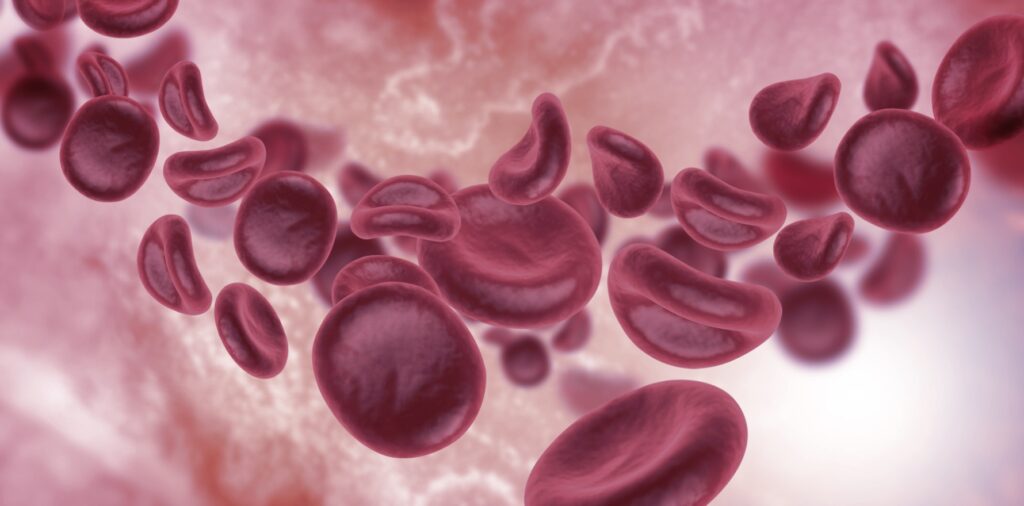
When Lord Kelvin said, “if you don’t measure it, you can’t improve it”, I expect blood glucose was the last thing on his mind.
But this aphorism applies every bit as much to improving glycaemic control as it does to any other endeavour.
Insulin-requiring diabetes involves a dynamic glycaemic environment. To optimise glycaemic control, a person living with diabetes must not only be aware of their current glucose reading, but also be cognisant of how their levels are trending. This enables them to anticipate and mitigate both hypo- and hyperglycaemia.
The most used method is blood glucose monitoring with a glucose meter that measure the glucose level in a very small volume of blood, providing a contemporaneous result. This process of self-monitoring of blood glucose is often referred to as “finger-prick testing”.
While this method has served us well, it has significant limitations. It provides a glucose reading at a certain moment in time but provides no detail on where that glucose level has been or where it is heading.
To obtain information on long-term management, we rely on a different measure. HbA1c is a well-validated metric of long-term control and a predictor of complication risk. A blood test performed every two to three months provides robust data predicting long-term complications and enabling the monitoring of changes in therapy or lifestyle modification.
However, this measure too has limitations, providing no insights into the day-to-day gyrations and fluctuations of glucose levels.
To address the shortcomings of both tools, one must have the ability to continuously monitor glucose using a continuous glucose monitoring (CGM) or flash glucose monitoring system.
There are several types of CGM and flash GM devices available in Australia and sensors last between seven and 14 days. CGM sensors are placed on the abdomen or arm and glucose data are shared with the patient’s smartphone via Bluetooth. Flash GM is a sensor technology that allows people with insulin-requiring diabetes to measure their glucose levels without a finger prick, by hovering a smartphone over a small sensor on the back of their arm.
Australians now have even more choice, with new technologies such as the FreeStyle Libre 2 CGM system being listed on the National Diabetes Services Scheme as of 1 August 2021.
Annual costs for these devices range between $2500 and $5000 per annum. This means that they are out of reach for many Australians, were they to self-fund, thus denying them the benefits of these technologies.
This clinical need and the benefits of CGM has not escaped the attention of government, which should be commended for recognising the utility of CGM and flash GM and generously providing a subsidy for 58,000 of the 127,000 Australians living with type 1 diabetes.
Unfortunately, this subsidy is denied to the majority of people with diabetes in clinical need. In an inexplicable departure from standard practice in our egalitarian health system, access to the subsidy depends not just on clinical need but also on arbitrary age cut-offs or one’s concessional status. This subsidy is available to people with type 1 diabetes who are women actively trying to conceive, pregnant or breastfeeding, or individuals who have concessional status, or who are under the age of 21.
Those not eligible need to spend thousands to use these devices which sadly puts this life-changing technology out of reach. This includes young parents having to choose between their own health priorities and raising a family, progressing a career or running a business. These people are the machinery of the economy and the irony of their taxes paying for someone else’s “free” sensors while not being able to afford the out-of-pocket expenses has not gone unnoticed.
I see this as discriminatory and unAustralian. A two-level co-pay is required for all other National Diabetes Services Scheme products, such as strips for finger prick testing and insulin pump consumables, but CGM and flash GM are either free to a select minority or full market price to everyone else.
Many studies have shown the utility of CGM and flash GM. When appropriate education is provided to support device use, these technologies have been shown to improve HbA1c, reduce glycaemic variability and reduce severe hypoglycaemia.
A real-world study of over 74,000 people with both type 1 and type 2 diabetes compared the 12 months prior to using flash GM. It found that hospitalisations for acute diabetes complications fell by 49% for patients with type 1 diabetes and 39.4% for patients with type 2 diabetes who had started using the FreeStyle Libre system.
Health-economic modelling has shown that not only are the devices cost effective, but they are also cost saving. This is in addition to the significant health benefits that they can provide. Modelling from the US estimates that improved time-in-range from diabetes monitoring technology could produce savings to the health system in the order of $US6.7–9.7 billion.
The pandemic has served to reinforce the benefits of these glucose monitoring technologies. Because the glucose data recorded by CGM and flash GM Ssstems is recorded in the cloud, it can be viewed remotely by healthcare professionals, without requiring a face-to-face appointment. Being able to access their patients’ glucose data in real time has been an enormous benefit to healthcare professionals.
My heartfelt plea to government is to redress this imbalance, improve outcomes for those in need and provide all those meeting the clinical criteria with a subsidy. This will help reduce hospitalisation costs and the burden of diabetes complications that may be avoided or reduced with better access to CGM and flash GM, which are now the recognised standard of care for type 1 diabetes by local and international professional bodies.
Associate Professor Gary Kilov is an Australian GP and founding member of the RACGP diabetes specific interest group and the Primary Care Diabetes Society of Australia. He has clinical appointments at the University of Melbourne and the University of Sydney and runs a multidisciplinary diabetes clinic in Northern Tasmania.
